



Next: Instrumental throughput
Up: No Title
Previous: Technical notes
This Appendix gives a variety of information useful for scheduling observations.
Table  shows how the Local Sidereal Time (LST) of the start and end of the
night varies throughout the year, and should be used to determine which month
is best suited for observing a particular object. Figures
shows how the Local Sidereal Time (LST) of the start and end of the
night varies throughout the year, and should be used to determine which month
is best suited for observing a particular object. Figures  to
to  are plots of declination against hour angle for the latitude of La Palma,
showing lines of equal zenith distance, and indicating the telescope
limits. These plots can be used to determine for how long either side of
transit it is possible to observe an object.
are plots of declination against hour angle for the latitude of La Palma,
showing lines of equal zenith distance, and indicating the telescope
limits. These plots can be used to determine for how long either side of
transit it is possible to observe an object.
Observations should of course be scheduled so that objects are not
observed at large values of the zenith distance. This causes problems
both with atmospheric extinction (see Appendix  ),
and with differential
refraction, whereby light at different wavelengths is refracted by
different amounts. Differential refraction means that:
),
and with differential
refraction, whereby light at different wavelengths is refracted by
different amounts. Differential refraction means that:
- If acquisition and guiding is carried out at a very different
wavelength from that of the observation, the object may not be
where you think it is.
- For low dispersion slit spectroscopy, the object being observed
can only be simultaneously centred in the slit for all wavelengths
if the PA of the slit is aligned with the parallactic angle.
If the slit is not aligned with the parallactic angle, there
are likely to be wavelength dependent slit losses.
Figure  shows the angle of refraction as a funtion of wavelength
and airmass. Table
shows the angle of refraction as a funtion of wavelength
and airmass. Table  gives the airmass as a function of zenith distance.
The parallactic angle for a particular observation can be
found from Figure
gives the airmass as a function of zenith distance.
The parallactic angle for a particular observation can be
found from Figure  , which is a plot of parallactic angle
against hour angle, showing lines of constant declination.
Note that there is a discontinuity at transit of objects with
declination equal to the latitude of La Palma.
, which is a plot of parallactic angle
against hour angle, showing lines of constant declination.
Note that there is a discontinuity at transit of objects with
declination equal to the latitude of La Palma.
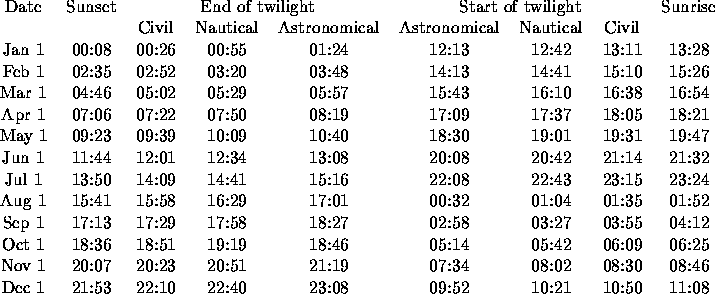
Table: LST of twilight on La Palma (1989)
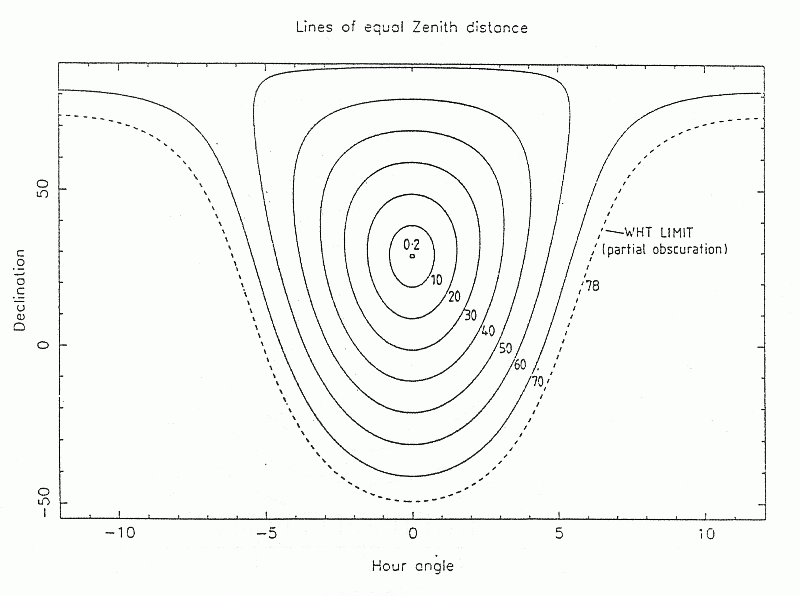
[ TIFF ]
Figure: Plot of declination against
hour angle for the latitude of
La Palma, showing lines of equal zenith distance. This plot shows the
region within which observations are possible with the WHT.
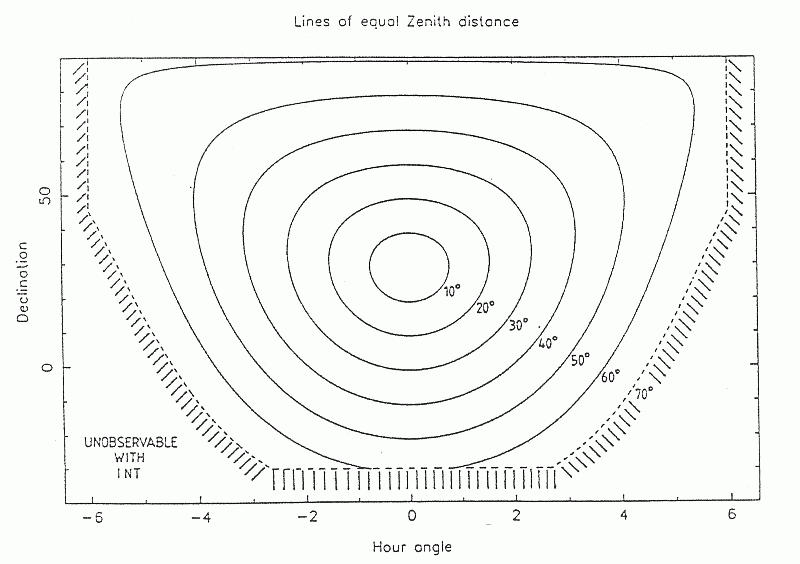
[ TIFF ]
Figure: Plot
of declination against hour angle for the latitude of
La Palma, showing lines of equal zenith distance. This plot shows the
region within which observations are possible with the INT.
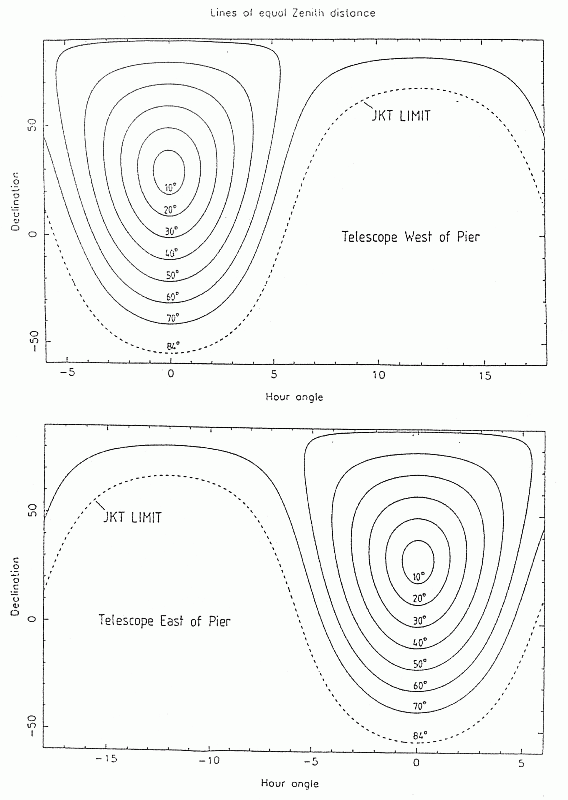
[ TIFF ]
Figure: Plot
of declination against hour angle for the latitude of
La Palma, showing lines of equal zenith distance. This plot shows the
region within which observations are possible with the JKT, with the
telescope both east of the pier (a) and west of the pier (b).
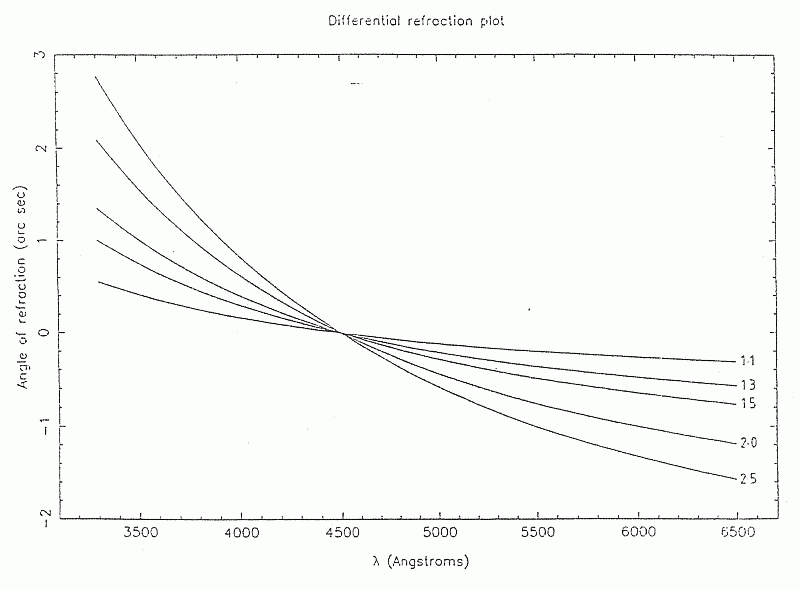
[ TIFF ]
Figure: Plot
showing how the magnitude of atmospheric refraction varies
with wavelength and airmass.
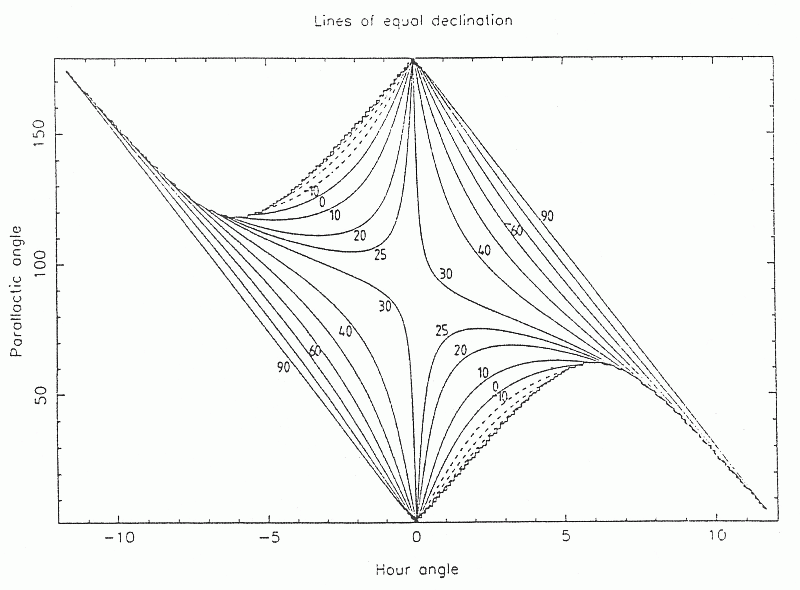
[ TIFF ]
Figure: Plot
of parallactic angle against hour angle, showing lines
of constant declination. Note the discontinuity at transit (hour angle
equal to zero) for objects with a declination equal to the latitude
of La Palma.




Next: Instrumental throughput
Up: No Title
Previous: Technical notes
Tue Aug 15 16:42:46 BST 1995
 shows how the Local Sidereal Time (LST) of the start and end of the
night varies throughout the year, and should be used to determine which month
is best suited for observing a particular object. Figures
shows how the Local Sidereal Time (LST) of the start and end of the
night varies throughout the year, and should be used to determine which month
is best suited for observing a particular object. Figures  to
to  are plots of declination against hour angle for the latitude of La Palma,
showing lines of equal zenith distance, and indicating the telescope
limits. These plots can be used to determine for how long either side of
transit it is possible to observe an object.
are plots of declination against hour angle for the latitude of La Palma,
showing lines of equal zenith distance, and indicating the telescope
limits. These plots can be used to determine for how long either side of
transit it is possible to observe an object.









